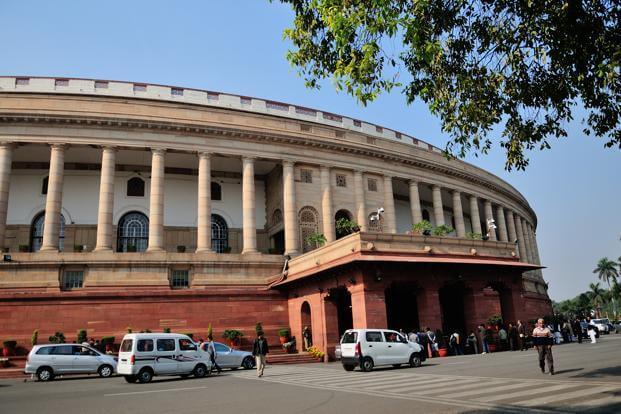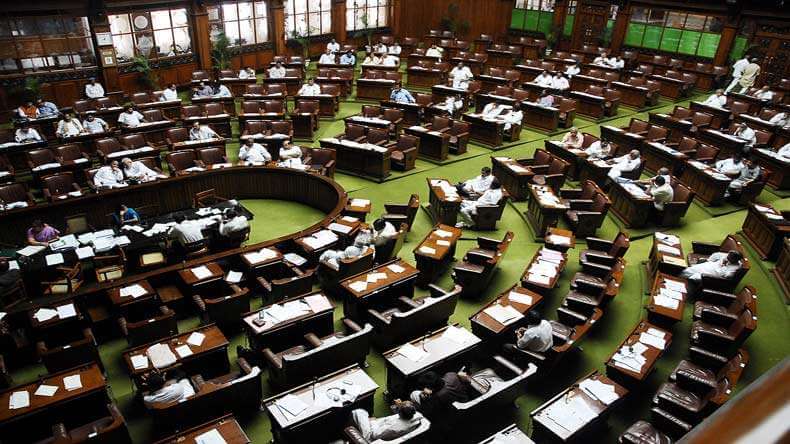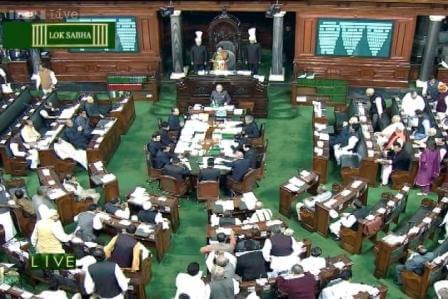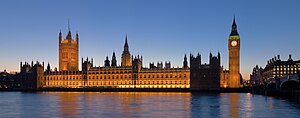The majority required to pass a resolution, motion, or a bill varies depending upon the purpose.
As this is one of the most confusing areas for most students, we are coming up with a new post on the type of majorities used while voting in the Indian Parliament as well as State Legislatures.
Types of Majorities as per the Indian Constitution
Majority needed in the Indian Parliament
There is no explicit classification of majorities in the Indian Constitution. But a careful reading of different articles in Indian Constitution would provide an idea about four types of majorities.
They are Absolute Majority, Effective Majority, Simple Majority and Special Majority. For ease of understanding, we have again classified Special Majority into four sub-types.
Types of Majorities Used While Voting in the Indian Parliament
Absolute majority
It refers to a majority of more than 50% of the total membership of the house. For example, as the total membership of Lok Sabha is 545, an absolute majority in Lok Sabha means – 50% of 545 plus 1, ie. 273.
Cases, where the absolute majority is used: In the normal business of the Parliament or State Legislature absolute majority, is not generally used. But this majority is used during the general election, for the formation of government at Center and States.
Effective Majority
Effective Majority of the house means more than 50% of the effective strength of the house. This implies that out of the total strength, we deduct the vacant seats. When the Indian Constitution mentions “all the then members”, that refers to the effective majority.
For example, in Rajya Sabha, out of the total strength of 245 members if there are 45 vacancies, then the effective strength of the house is 200. Then the effective majority is 50% of 200 plus 1, ie 101.
Cases where the effective majority is used:
Removal of Vice-president in RS – Article 67(b).
Removal of Speaker and Deputy Speaker of Lok Sabha and State Legislative Assembly.
Simple Majority
This refers to the majority of more than 50% of the members present and voting. This is also known as functional majority or working majority. The simple majority is the most frequently used form of majority in Parliamentary business. When the constitution or the laws do not specify the type of majority needed, the simple majority is considered for voting.
To understand simple majority, let us consider a situation in Lok Sabha. On a particular day, out of the total strength of 545, 45 were absent and 100 abstained from voting on an issue. So only 400 members were present and voting. Then the simple majority is 50% of 400 plus 1, ie. 201.
Ordinary bills need to be passed with a simple majority in both Houses of the Parliament before it is sent to Indian President for his assent.
Cases where the simple majority is used:
To pass Ordinary/Money/Financial bills.
To pass Non-Confidence Motion/Adjournment Motion/Censure Motion/Confidence Motion.
For the removal of Vice President majority required in Lok Sabha is the simple majority – A67(b).
To declare a financial emergency.
To declare a state emergency (President’s rule).
Election of Speaker/Deputy Speaker of Lok Sabha and State legislatures.
Constitution Amendment Bill under Article 368 which needs to be ratified by states, require only simple majority at State Legislatures.
Special Majority
All types of majorities other than the absolute, effective or simple majority is known as the special majority. A special majority are of 4 types, with different clauses.
Type 1 – Special Majority as Per Article 249.
Type 2 – Special Majority as per Article 368.
Type 3 – Special Majority as per Article 368 + 50 percent state ratification by a simple majority.
Type 4 – Special Majority as per A61.
Special Majority as Per Article 249
Special majority as per article 249 requires a majority of 2/3rd members present and voting. For example, if out of the 245 members in Rajya Sabha, if only 150 are present and voting, then the special majority required as per article 249 would be 101.
Cases where special majority as per article 249 is used: To pass the Rajya Sabha resolution to empower the parliament to make laws in the state list. (valid up to 1 year, but can be extended any number of times).
Special Majority as Per Article 368
Special majority as per article 368 requires a majority of 2/3rd members present and voting supported by more than 50% of the total strength of the house. This type of majority is used for most of the Constitutional amendment bills. To pass a constitution amendment bill in Rajya Sabha, in addition to getting the support of 123 members, the bill should be favoured by more than 2/3rd of the members present and voting.
Cases where special majority as per article 368 is used:
To pass a constitutional amendment bill which does not affect federalism.
Removal of judges of SC/HC.
Removal of CEC/CAG.
Approval of national emergency requires special majority as per Article 368 in both houses.
Resolution by the state legislature for the creation/abolition of Legislative Council (Article 169).
Special Majority as Per Article 368 plus State ratification
This type of special majority is required when a constitutional amendment bill try to change the federal structure. Special majority as per article 368 plus state ratification requires a majority of 2/3rd members present and voting supported by more than 50% of the state legislatures by a simple majority. A good example would be the bill which introduced the National Judicial Appointments Commission (NJAC). It required the support of at least 15 state legislatures out of the 29 states.
Cases where special majority as per article 368 plus state ratification is used: To pass a constitutional amendment bill which affects federalism like the position of High Court Judges.
Special Majority as Per Article 61
Special majority as per article 61 requires a majority of 2/3rd members of the total strength of the house. In Lok Sabha, the special majority as per article 61 is 364 while in Rajya Sabha, the special majority as per article 61 is 164.
Cases where special majority as per article 61 is used: For the impeachment of the Indian President.
.jpeg)
.jpeg)


 Summoning is the process of calling all members of the Parliament to meet. It is the duty of Indian President to summon each House of the Parliament from time to time.
Summoning is the process of calling all members of the Parliament to meet. It is the duty of Indian President to summon each House of the Parliament from time to time.
